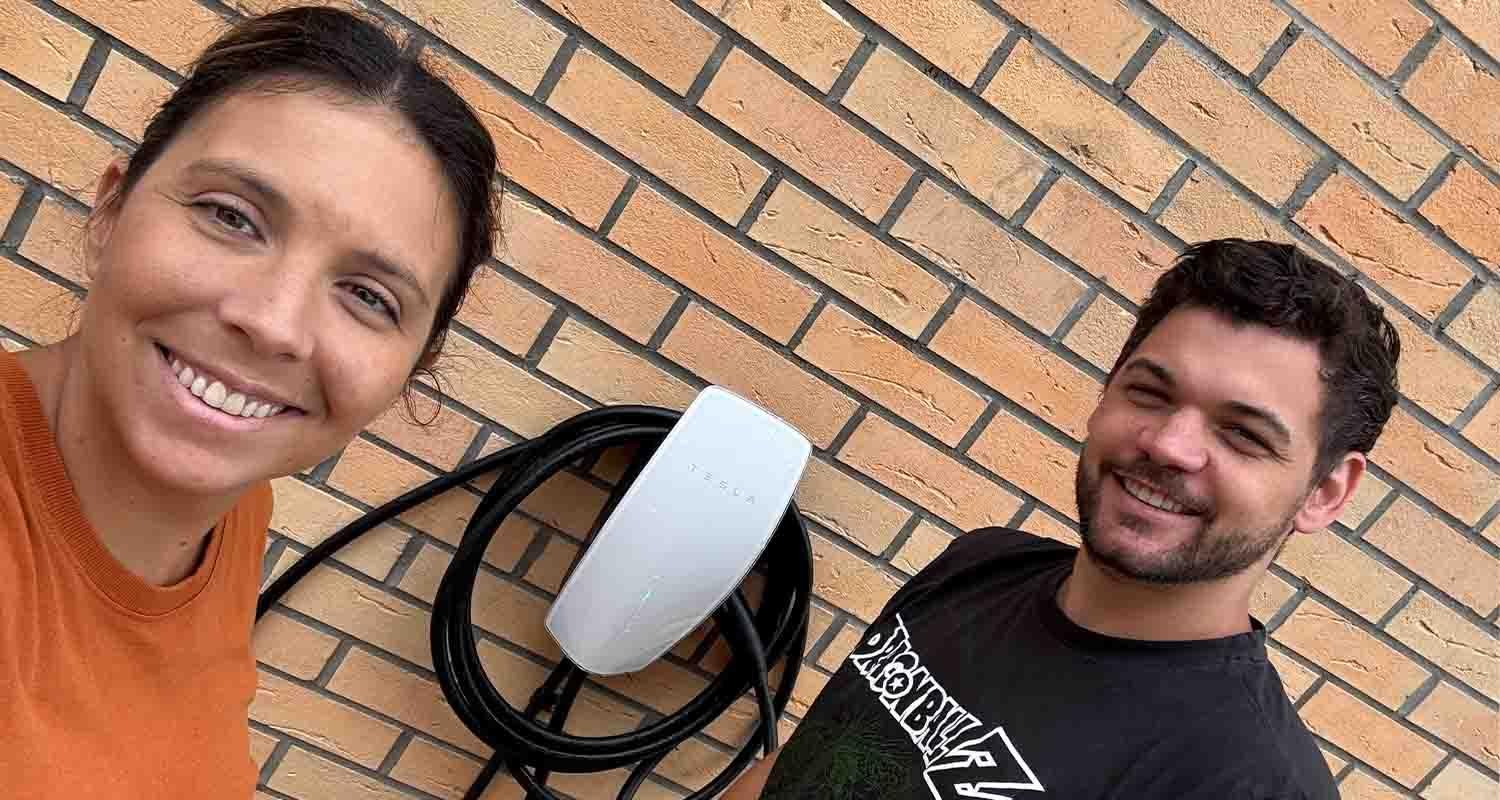Hypervolt Home 3 Pro vs Ohme Home Pro: which should you choose?
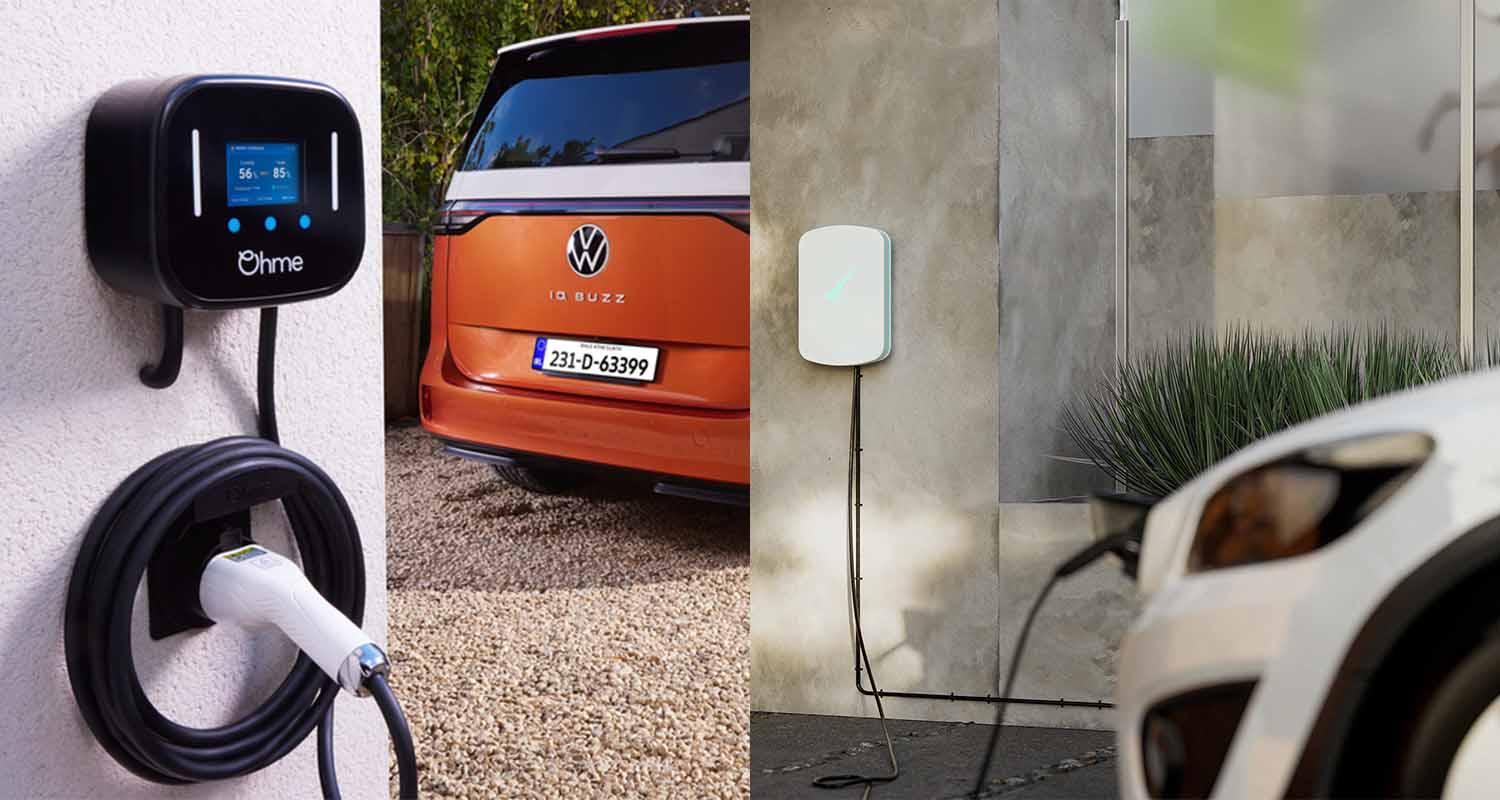
If you're looking for a mid-priced tethered home EV charger, two of the strongest contenders are the Hypervolt Home 3 Pro or the Ohme Home Pro. But is one better than the other?
Both come with an array of features that make them worthy of your hard-earned cash, but there are some subtle differences that may sway you either way.
Let’s dive in!
The basics
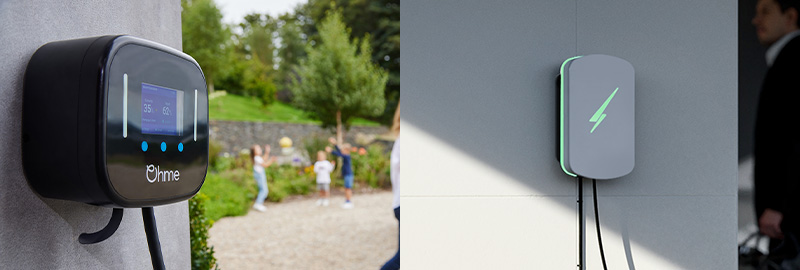
Features | ||
Display | Yes (LCD) | No |
Cable Options | Tethered; 5 or 8 metres | Tethered; 5, 7.5 or 10 metre |
Energy tariff integration | Intelligent Octopus Go, Octopus Agile | Intelligent Octopus Go, OVO Charge Anytime |
Control method | On device + app | App-only |
Connectivity | 3g/4g data connection | WiFi+Bluetooth |
Dimensions | H170 x W200 x D100 | H328mm x W243mm x D101mm |
Max power | 7.4kW | 7.4kW |
Starting from price (with installation)* | £936.90 | £1044.90 |
Manufacturer warranty | 3 years | 3 years (with paid option to extend) |
Best for | Energy tariff integration | Solar compatibility, OVO Charge Anytime users |
Both chargers are tethered, meaning the charging cable is permanently attached to the unit. They also have built-in software at the forefront of innovation, including:
Energy tariff integration that gives you access to smart EV tariffs without needing a compatible vehicle
Solar charging features
Cost tracking that provides accurate reporting of your charging sessions
Pricing
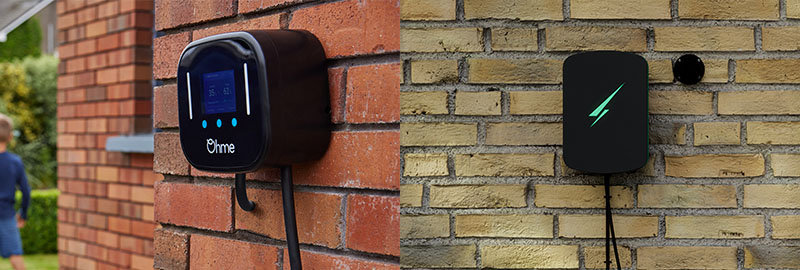
The Ohme Home Pro with a 5-metre cable takes the lead in terms of affordability, starting at £936 with installation or £538.80 without at the time of writing. The cheapest Hypervolt Home 3 Pro (also with a 5-metre cable) isn’t far behind, coming in at £1,044.90 with installation or £642 without at the time of writing.
But what if 5-metres isn’t long enough? Both chargers offer cable upgrades:
Ohme Home Pro: upgrade from 5m to 8m for an extra £54
Hypervolt Home 3 Pro: upgrade from 5m to 7.5m (£42 extra) or 10m (£90 extra)
Verdict: The Ohme wins in terms of affordability, especially if you’re going for the baseline 5-metre model.
Design and interface
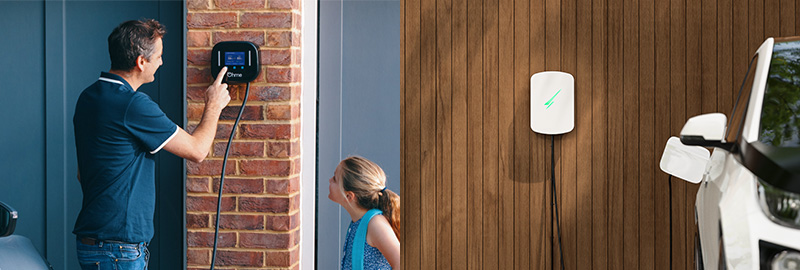
The Ohme Home Pro is compact and comes with a built-in screen, a rarity among home EV chargers. This screen displays live charging data and allows you to modify schedules without reaching for your phone. Looks-wise, the Ohme leans more towards function over form, with a boxy black-only design. The cable wraps around a holster that is separate from the Ohme unit, which increases the overall footprint the charger installation takes up on your wall.
Contrast this with the Hypervolt which has a built-in cable "storage" where the cable wraps around a recess at the back of the unit. The Hypervolt unit itself is larger than the Ohme Home Pro, but arguably takes up less space on the wall overall.
Looks-wise, the Hypervolt Home 3 Pro likes to make a statement. It comes in three colours (black, grey, and white) and features customisable LED lights that illuminate the front thunderbolt symbol and sides.
Verdict: the Hypervolt Home 3 Pro wins this round thanks to a sleeker overall design.
Ease of use
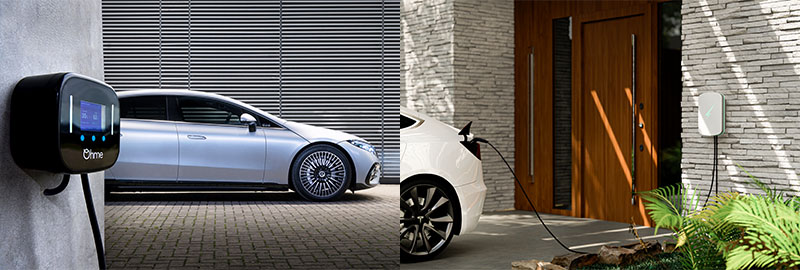
On first set-up, the Ohme Home Pro gets off to a great start thanks to its built-in mobile data connection, which kicks in as soon as the charger is powered on. This skips the Wi-Fi configuration step required by the Hypervolt Home 3 Pro.
However, that head start fades slightly once you begin using the Ohme app. While its smart features are powerful, they require some tinkering to get working perfectly with your energy tariff and vehicle. This is particularly true if you want the Ohme to use only excess solar energy for charging, which involves setting schedules that essentially “trick” the charger into operating a solar only mode. But we are nitpicking here - the app is still easy to set up and use, and is largely largely “set and forget.”
The Hypervolt Home 3 Pro’s app is more intuitive in terms of design interface with everything where you’d expect it to be. The downside is its cost-tracking feature: Hypervolt doesn’t allow you to add a stop time for peak/off-peak tariff rates. Instead, it automatically stops at midnight or when the next rate begins, forcing you to input off-peak rates twice if they start before midnight.
However, the solar functionalities are easier to use with three options available: solar only charging, solar with grid boost or grid only.
Verdict: The Hypervolt Home 3 Pro sneaks another win. While cost tracking can be fiddly, the rest of the app is very straightforward.
App and smart features
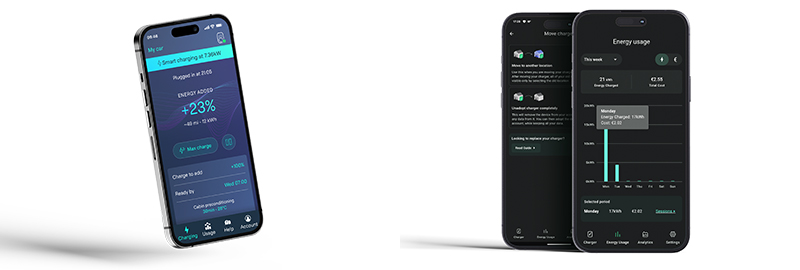
The Ohme app has a more advanced scheduling setup than most home EV chargers. You can set a target charge (e.g. “80% by 7 am”), and the Ohme will calculate the cheapest way to achieve this based on your energy tariff. This is a really neat way of setting up your charging schedules and the Ohme will ensure it meets your target charge by the desired time, as well as charging during your off-peak rate if you have one.
The main drawback is it requires your EV to be compatible with this setup so Ohme can read the battery status. Many car manufacturers allow this and if your vehicle is compatible, then the Ohme app works brilliantly. But if your vehicle is not on the compatibility list, then setting up your charging targets becomes more fiddly, which is a shame although not a deal breaker.
The Hypervolt Home 3 Pro, by contrast, settles with the tried and tested "start and stop time" for scheduling. Simply choose the time you wish your vehicle to start charging and when to finish and that's it. If you want to prevent your EV charging past a certain percentage, then you should be able to set this limit on your vehicle itself.
Other highlights include the solar functionality which allows you to fine-tune how much solar energy is used for charging via the aforementioned solar modes. It also offers extras such as LED customisation and Alexa voice control (albeit with limited functionality).
Both chargers support Intelligent Octopus Go without needing a compatible vehicle. Hypervolt goes one step further by also supporting OVO’s “Charge Anytime” tariff.
Verdict: It’s a tie. Both have very good apps for different reasons.
Which should you buy?
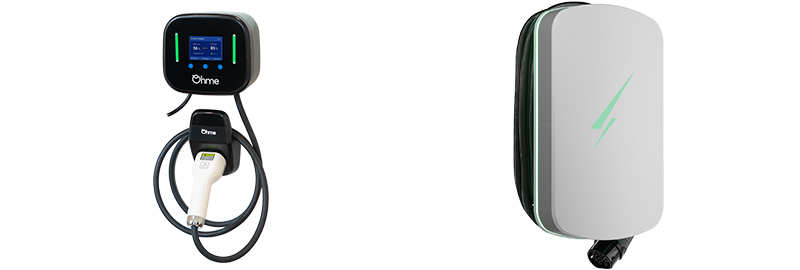
Round per round, the Hypervolt sneaks this one 3-2 thanks to its simpler user interface, neater cable storage, and overall looks.
But it is a tight one as both products offer smart EV tariff integrations - the Ohme offering Intelligent Octopus Go and Octopus Agile, while the Hypervolt works with Intelligent Octopus Go and OVO Charge Anytime. Your choice of tariff alone may steer you towards one or the other - check out our EV Cost to Charge tariff comparison tool to see which EV tariff is best for you, and which charger you may need to access them.
If price is your biggest concern, then the Ohme Home Pro is your best bet whereas the more style-conscious among you or those with solar panels will want to opt for the Hypervolt Home 3 Pro.


